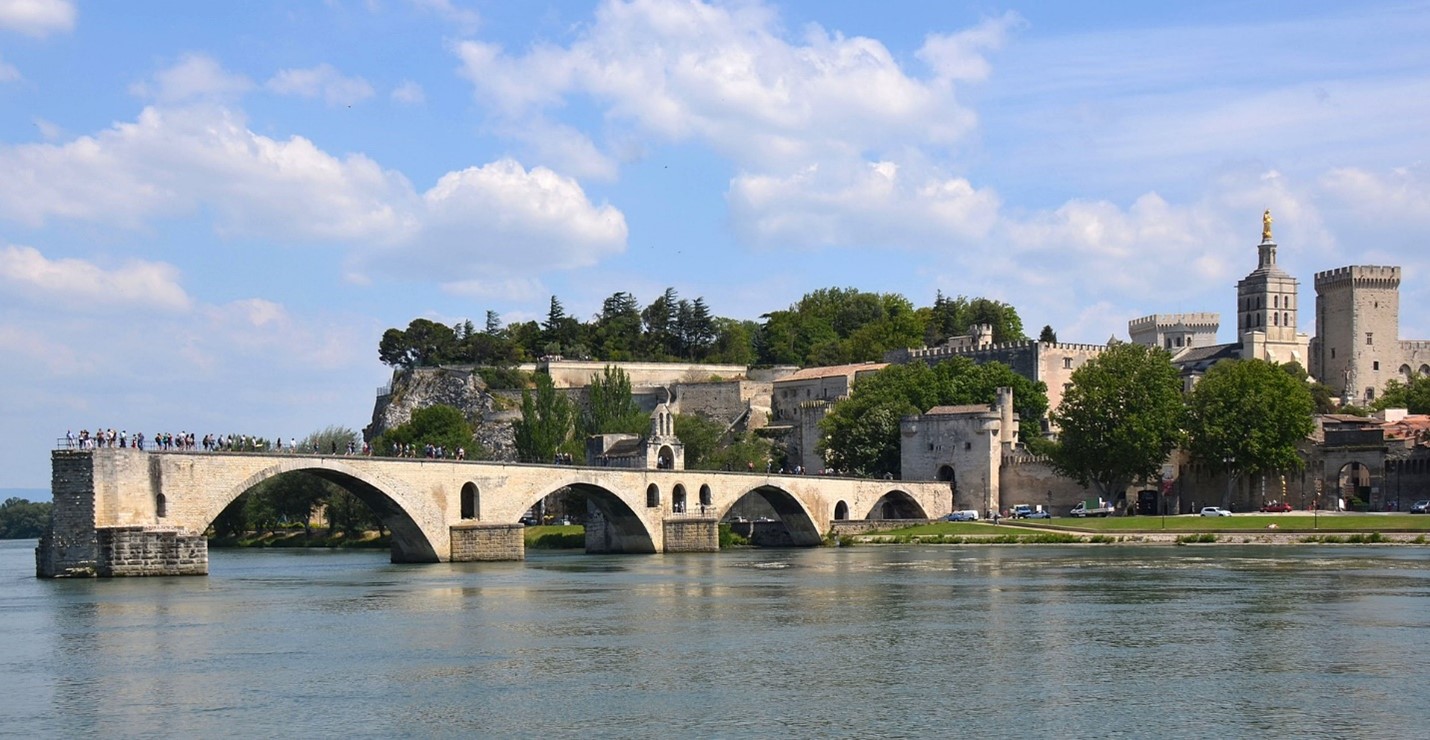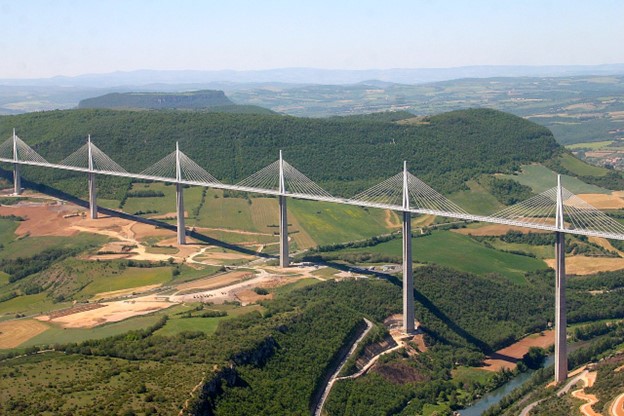Brian Brenner, P.E., F.ASCE, is a professor of the practice at Tufts University and a principal engineer with Tighe & Bond in Westwood, Massachusetts. His collections of essays, Don’t Throw This Away!, Bridginess, and Too Much Information, were published by ASCE Press and are available in the ASCE Library.
In his Civil Engineering Source series More Water Under the Bridge, Brenner shares some thoughts each month about life as a civil engineer, considering bridge engineering from a unique, often comical point of view.
The Avignon Bridge is well-known for two reasons. The first is that it is a medieval stone arch bridge crossing the Rhone River in southern France, but not all the way across, because only four spans have survived. The rest were destroyed by flooding. The second reason is that the bridge is the subject of a popular song and dance, “Sur le Pont d’Avignon.” The song’s first verse is translated as—
“On the bridge in Avignon
They are dancing there, they are dancing there
On the bridge in Avignon,
They dance in circles there”
The verses of the song provide guidance on how to dance on the bridge. Fine gentlemen are instructed to bow, and beautiful ladies curtsy in response. And then they do it again.
The song is very catchy in its native language, a little bit like a bridge version of the Macarena. The dancing seems staid, perhaps because only pieces of the original bridge remain and if you danced with too much motion you would fall off the end. The song and dance are well-known to French schoolchildren, and they have helped to put the small city of Avignon on the map.
 Henk Monster
Henk Monster

For English speakers, French and other Romance languages have what appears to be a peculiar quirk. Inanimate nouns are designated as masculine or feminine. In French, a bridge is referred to by the designation “le,” a masculine article. “La” refers to feminine objects. Therefore, bridges in France are considered to have a masculine gender, like “le Pont d’Avignon.”
However, in neighboring Germany, bridges receive a feminine designation in the German language. There is no discernable structural difference between bridges in France and Germany, at least related to gender issues. But does it make a difference in bridge perception if the structure is the subject of a masculine or feminine designation?
Some studies suggest that it does. In an article, “Why Language May Shape Our Thoughts” [https://www.newsweek.com/why-language-may-shape-our-thoughts-81725], author Sharon Begley describes reactions in the press to the opening of the Millau Viaduct. This seemingly gender-neutral structure is a spectacular, multi-span cable-stayed bridge built across a French valley.
 Mike Switzerland
Mike Switzerland Begley writes about the bridge’s opening:
“German newspapers described how it ‘floated above the clouds’ with ‘elegance and lightness’ and ‘breathtaking’ beauty. In France, papers praised the ‘immense’ ‘concrete giant.’ Was it mere coincidence that the Germans saw beauty where the French saw heft and power?”
Continuing, the article reports on the work of a psychologist, Lera Borodistky, who studied the issues in more detail. Her publications describe experiments that suggest that thought does not only shape language expression but that the converse is also true: how language and grammar are formulated can impact how people think.
Based on this conclusion, Germans would tend to view bridges through a feminine lens, whereas French speakers would understand the bridge form to be masculine. It is not just the arbitrary assignment of gender in the language, but people’s thought process that is shaped by this grammatical expression.
On one level, this is a little bit nutty. Bridges are definitely not masculine nor feminine. They are not alive and thus are not subject to gender assignment. If we consider gender stereotypes – for example, that “feminine” is associated with “lightness” and “daintiness,” whereas “masculine” is “tough” and has a harder time cleaning the dishes, and if we projected this loose, stereotypical association onto bridges in Germany and France, maybe we would see some correlation in their designs. German bridges would be more ethereal and wispier. French bridges would be form-follows-function behemoths with no affectation or frills. However, there does not seem to be evidence of this loose gender association with French and German bridges. At least no one has systematically studied it.
On the other hand, a blogger conducted a thought experiment, querying German and Spanish speakers about how they would describe a “bridge.” As we have seen, the tense of a bridge in German is feminine, but in Spanish it is masculine. In their responses to the study, the German speakers used the adjectives “beautiful, elegant, fragile, peaceful, pretty, slender.” Spanish speakers thought a “bridge” was “big, dangerous, long, strong, sturdy, towering.”
English speakers do not have to consider arbitrary gender assignment in the language, although we have plenty of other grammatical quirks to deal with (“i” before “e” except after “c”, and things like that). So U.S. bridges remain profoundly ungendered, with no language-assigned masculine or feminine traits.
Well, most U.S. bridges. A 2021 promotion for the opening of a pedestrian crossing in Portland, Oregon, was reported to have a very “masculine” tone. In the article “The Pearl Has a Very Masculine New Footbridge,” author Conner Reed describes how the city’s intense promotion video features all sorts of masculine tropes to introduce the new bridge to the public. The video narration, mostly in ALL CAPITAL LETTERS, is proud to share that the span was installed using TWO MASSIVE CRANES.
Reed’s article concludes with suggestions on how the promotion could be improved by adding the following features:
- “A playlist that’s just Bon Jovi’s “Wanted Dead or Alive,” Aerosmith’s “Dream On,” and Chicago’s “I’m a Man,” to be blasted on said “bridge” during business hours.
- Flames! Real ones.
- At an undisclosed hour every day, each pedestrian heading west gets a free year’s subscription to GQ.
- Dirty fries for the first 100 souls to cross all 200 feet.
- ‘Saturdays Are for the Boys’ Saturdays, where a rotating cast of volunteers chant ‘Saturdays are for the boys’ each Saturday to all passersby.”

Further reading
“Sex, Syntax and Semantics,” by Lera Boroditsky, Lauren A. Schmidt, and Webb Phillips
From Language in mind: Advances in the study of language and thought, American Psychological Association.
From 4.11 Conclusions:
“A body of evidence suggests that people’s thinking about objects can be influenced by aspects of grammar that differ across languages. A series of studies found effects of grammatical gender on people’s descriptions of objects, their assessments of similarity between pictures of objects, and their ability to remember proper names for objects.”
Some studies suggest that it does. In an article, “Why Language May Shape Our Thoughts,” by Sharon Begley, Newsweek, July 8, 2009
“Is a Bridge Male or Female?” by Ian Hughes
“The Pearl Has a Very Masculine New Footbridge,” by Conner Reed, Portland Monthly, June 4, 2021
“Keys and Bridges: Can Language Shape Thought.” Blog post in A Thing for Words, July 25, 2014



